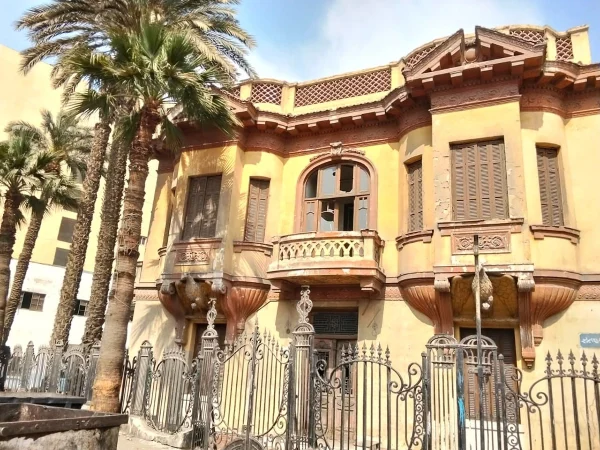
A legacy on the brink of oblivion… Will the palace of Shehata Selim Pasha return to the forefront of Suez?
- Knowledge is power
- The Future Of Possible
- Hibs and Ross County fans on final
- Tip of the day: That man again
- Hibs and Ross County fans on final
- Spieth in danger of missing cut
In one of the old streets of Suez, a palace stands silent, but its walls never cease to tell their story. Among the inscriptions, decorations, and towering columns, the stones whisper the tale of a man who loved his city and crafted for it an architectural masterpiece that pulsates with art, generosity, and belonging.
This is the palace of Shehata Selim Pasha, one of the notables of Suez in the first half of the 20th century, who was not content with building personal glory, but left behind an architectural and human legacy that tells the story of an entire city. Here, Islamic architecture intersects with Greek ornamentation, and history intersects with identity, in the heart of the Al-Gharib neighborhood, where time cannot be erased from the stone memory.
Who was Shehata Selim Pasha?
Shehata Selim was born in 1895 in the governorate of Suez to one of the most prominent families in Suez, such as the Al-Barqi and Shalazam families. He made his way in life through maritime transport. He worked in the import and export of ship waste until he became one of the most prominent figures in Suez in the 20th century.
Shehata Selim’s wealth was not a personal goal so much as a means of fulfilling his social duty. He was known for his charitable work and established associations to collect donations from prominent figures and distribute them to the poor without any profit motive. King Farouk even granted him the title of “Pasha” in recognition of his charitable contributions. This was especially true after he donated the construction of the Chest Hospital.
Shahata Selim Palace: An Architectural Dream
In 1928, Shahata Selim Pasha decided to build a palace that would reflect his refined taste and social status. He wanted it to combine beauty and sophistication. He hired a number of Italian architects and painters to design and execute the project.
He chose Islamic architecture as the basis for the design, but incorporated European and Greek decorative elements, resulting in a masterpiece that reflects cultural diversity and richness.
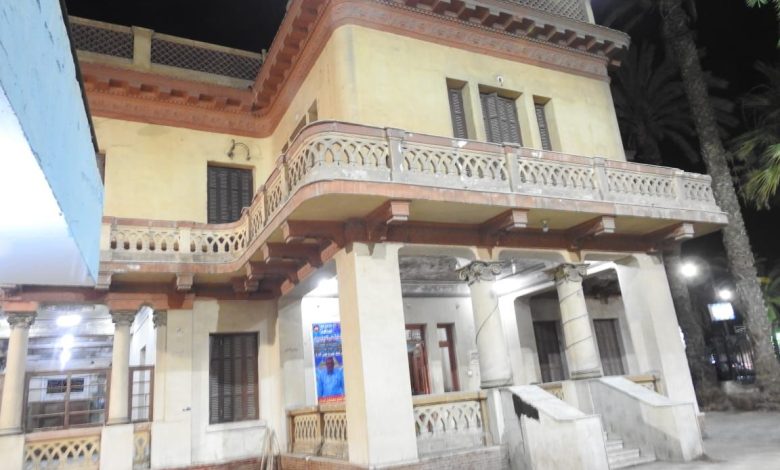
The palace’s unique location in the heart of Suez
The palace is strategically located on Al-Jaysh Street at the intersection of 23 July Street and Khalid Bin Al-Waleed Street. It is one of the city’s most prominent streets, directly opposite Al-Hilal Hospital and the “Stars of Sport” café. This location has made it prominent to everyone passing through the area, so much so that the residents of the neighborhood consider it part of their daily identity. They describe it as “the palace that cannot be ignored.”
The palace consists of two floors and a large garden, surrounded by a luxurious iron fence without any welding. It was built using French and Italian techniques similar to those used to construct the Eiffel Tower and the Imbaba Bridge. The decorations on the facades are in the Greek style, such as the “egg and arrow” motif, friezes, and Ionic columns.
Below the balconies, two statues of winged eagles stand out, giving the building a majestic appearance. The skill of the Italian artists who executed the finest details is evident.
The interior of the palace: art and creativity in every corner
The interior is no less impressive than the exterior. The floors are made of luxurious marble on the ground floor and oak and beech wood on the upper floor. The staircase banisters are made of pure copper, and the handles and doors are meticulously crafted.
The walls and ceilings are hand-decorated with plaster by skilled artists.
Each room in the palace has its own unique touch, from the floral decorations and window design to the distribution of light. The palace’s large windows allow natural sunlight to enter, keeping it healthy and free of humidity for decades.
The Baghdadi style of construction: an art form threatened with extinction
Another distinctive feature of the palace is that it was built in the Baghdadi style, which was common in the old neighborhoods of Suez, such as Al-Gharib, Al-Salamia, and Kafr Kamel.
This style does not rely on reinforced concrete, but rather on wooden marble columns and ceilings supported by intricate decorations. Today, the features of this architectural art are disappearing as a result of neglect and unplanned urban development. This makes the Shehata Selim Palace a living reference for understanding this style.
The numerous windows covering the palace walls allow natural light to flood in, creating a healthy climate all year round. The design also contributes to good ventilation, which is rare in historic buildings. This has helped it to remain in relatively good architectural condition even after nearly a century.
The palace between social use and cultural identity
After the death of Shehata Selim Pasha, the palace was used in the 1960s as a cultural and sports center for the petroleum workers’ union. It was then purchased by a petroleum company and designated for social events and sports and cultural activities. Despite this use, no real steps were taken to restore it or convert it into a tourist attraction or heritage museum befitting its value. Shata Selim’s contribution was not limited to the palace. He donated a piece of land and built a charitable hospital for the treatment of chest diseases in the 1940s.
He officially registered it to serve the people of Suez, making it the first charitable initiative of its kind in the city’s history. Because of this move, King Farouk honored him and granted him the title of “Pasha,” a title that was only given to a few businessmen at the time.
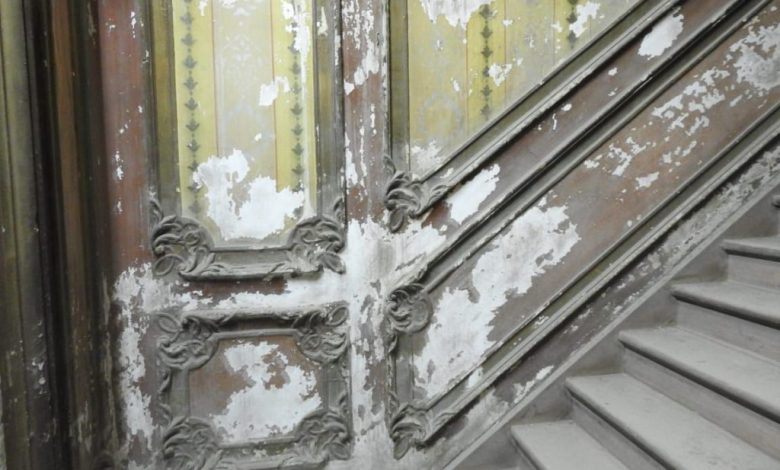
A heritage in need of rescue: experts cry out and restoration plans are lacking
Dr. Ali Al-Suwaisi, professor of fine arts at the University of Suez, confirms that the palace is one of the rare palaces in the Canal Zone. It has great archaeological value and deserves to be included in the list of Egyptian architectural heritage. Despite research attempts and preliminary restoration studies, no scientific restoration project has been carried out to preserve the palace, exposing it to the risks of neglect and deterioration.
Testimonials from neighbors: The palace still attracts attention
Hajj Imad Abbas, a resident of Army Street, said, “We are proud that the palace is here. People come from outside to see it and take pictures. Even though it has been nearly 100 years since it was built, the palace is still standing strong and its grandeur remains, as if it is speaking about the history of Suez with its stones and decorations.” The palace is still standing strong and its prestige remains, as if it speaks of the history of Suez through its stone and ornamentation.”
The palace of Shihata Pasha remains more than just an archaeological building; it is a living testimony to a golden age in the history of the city of Suez, when architecture was a means of expressing identity, belonging, and love for a place. Today, this architectural masterpiece is in urgent need of care and scientific restoration to ensure its survival for future generations. It should be turned into a cultural and tourist attraction that will restore Suez’s place among Egypt’s heritage cities.
A unique architectural masterpiece in the heart of Suez
The palace, currently owned by the “Petroleum” company, is located in the city of Al-Gharib in the governorate of Suez. It is one of the most magnificent architectural landmarks that still retains its beauty and splendor despite more than a century since its construction.
The palace was transferred to Shell years ago, remaining one of the few examples of European-style architecture in Egyptian palaces during the modern era. However, it has not been exploited for tourism or cultural purposes in a manner befitting its status.
Despite the passage of nearly 123 years since its construction, the palace has not yet been registered as an Islamic or Coptic monument, despite its remarkable preservation of its original structure and artistic and architectural elements. This administrative neglect raises questions about the fate of this building, which represents a rare piece of history and demonstrates exceptional artistic skill in its design and execution.
Who will save the palace?
The palace is distinguished by its European-style decorations and intricate architectural details. These include Ionic columns and friezes, shield and arrow decorations, and the Greek “egg and arrow” motif, which symbolically expresses the cycle of life and death. Also eye-catching are the falcon sculptures with outstretched wings above the ground floor windows. The scene reflects the power and wisdom of symbolic architectural culture.
At several recent seminars in Suez, a number of heritage enthusiasts called for the palace to be repurposed through a comprehensive project to revive it as a tourist and cultural attraction, making it one of the city’s most prominent landmarks. The city’s residents hope that it will soon be listed as a historic monument to protect it from neglect and to take advantage of its heritage value in revitalizing domestic and foreign tourism.
Read also
The Suez Folk Music Band: Guardians of Sesame Heritage Sing for Hope
Seafood Tables and the Secret of Saltiness: Summer Stories with Fish in Suez Heritage

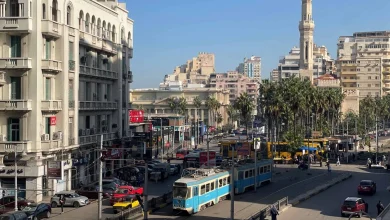

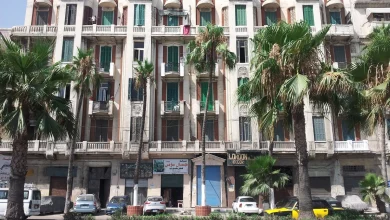
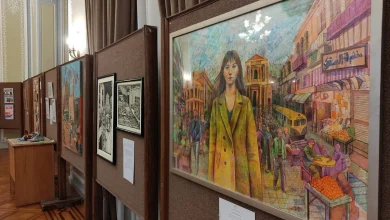
Hi, this is a comment.
To get started with moderating, editing, and deleting comments, please visit the Comments screen in the dashboard.